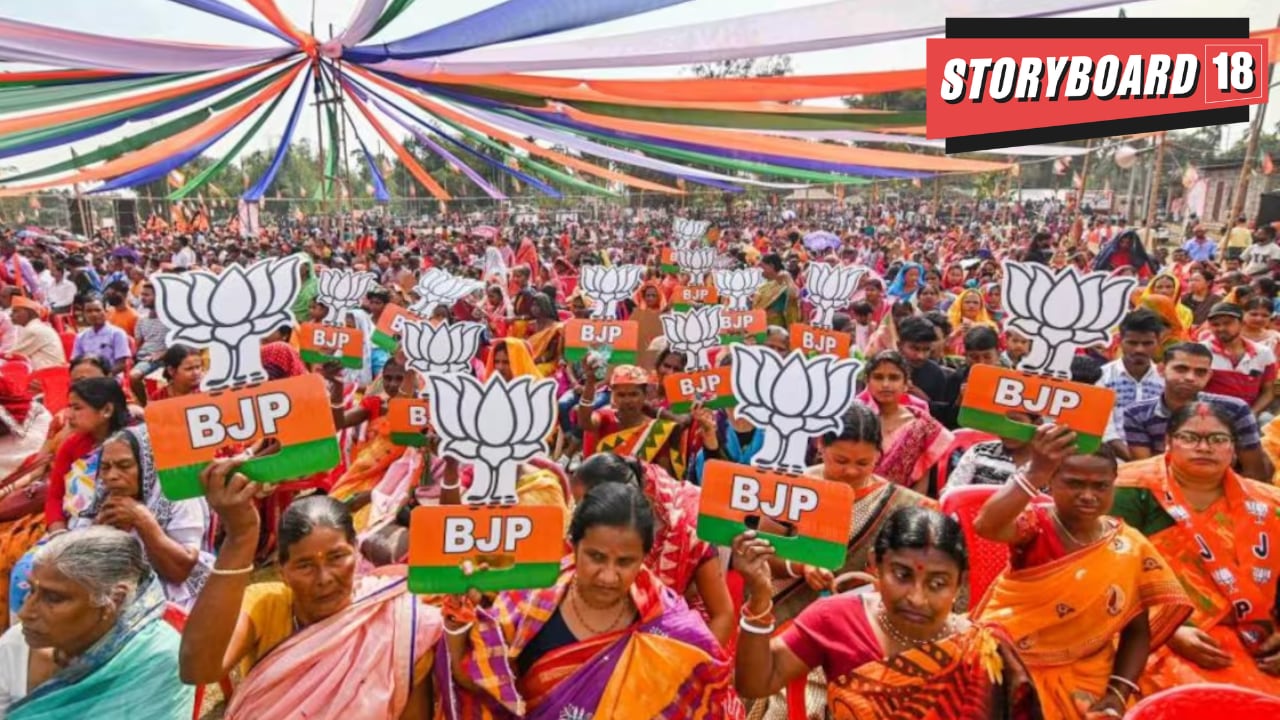If political AdEx (advertising expenditure) on digital is anything to go by, the BJP(Bharatiya Janata Party) is far ahead of every other party this season. Congress, the principal opposition party, is not even in the top ten.
The BJP has boosted political AdEx on social media significantly, splurging a total of Rs 1.5 crore in the last month. Of this, Rs 1.18 crore was spent in the last week alone. The spending on Google ads is even more; according to the Google Ads Transparency centre, political ad spends in the last 30 days stood at Rs 24.5 crore, with the BJP taking the lead by investing Rs 12.4 crore.
This is just the beginning, said experts. According to them, the numbers will grow faster as the election dates are announced and will also become more targeted.
Coming to targeted spends, Uttar Pradesh saw the highest spends both on Meta and on Google.
As per the Meta Ad Library Report, between January 11, 2024 and February 9, 2024, the BJP spent Rs 30.01 lakh on ads about social issues, elections or politics in Uttar Pradesh. The Phir Ek Baar Modi Sarkar page on the platform was the second highest spender in the state, with expenditure to the tune of Rs 14.75 lakh for the period.
The trends were similar on Google, too. Uttar Pradesh saw the highest spends when it came to political ads. The BJP spent Rs 1.46 crore in Uttar Pradesh alone. This was followed by Bihar, Gujarat, Madhya Pradesh and Delhi.
These figures just represent the disclosed expenditure adhering to social media platforms’ compliance requirements on political spending.
However, there exists a substantial amount of unaccounted spending, encompassing collaborations, influencer content creation, and various partnerships, often characterised by subtle messaging strategies.
“Political parties will use all potential opportunities within the digital and content ecosystem. Influencers and video content will be key during the 2024 general elections. Multiple content snippets and narratives will be created and distributed through various social channels,” said Unny Radhakrishnan, CEO, Digitas India.
According to Radhakrishnan, the narratives will be based on development, ideologies, regional topics etc.
“WhatsApp will be a key channel with communities and groups formed on the platform being leveraged heavily. In many parts of the country, there are YouTube channels focused on select geographies or audiences, which will also play an important role. One can expect significant paid media spends on most social channels,” he added.
The disclosed numbers on Meta and Google are significantly higher than spends on the 2019 Lok Sabha elections.
Between February 2019 and May 2019, Google and Facebook reported a combined political ad expenditure of approximately Rs 58 crore. Google disclosed 12,276 political ads amounting to Rs. 29.3 crore in four months, while Facebook’s India Ad Library declared a total of 132,419 ads valued at Rs 29.28 crore.
“The 2019 Lok Sabha elections were a watershed moment, marking India’s transition into the era of digital media-driven politics. The massive ad spends on platforms like Facebook, Instagram, Google, and YouTube highlighted the newfound power of digital media. Now, as we gear up for this year’s elections, I’m confident that this trend will not only continue but intensify,” said Shradha Agarwal, Co-Founder and CEO of Grapes, a digital marketing agency.
According to Agarwal, the digital media’s influence has only deepened, making it an important tool for political parties to connect with voters. However, what strikes a challenge here is that, due to the rise of deepfake technology and the rampant spread of misinformation, platforms such as Meta, Instagram and Threads are regulating the kind of content being posted on them.
“Therefore, this might pose some challenges for political parties leveraging these social media platforms for election purposes,” she said.
“In response to these challenges, political parties may need to diversify their communication channels and explore alternative avenues for digital media to reach their target audience. Like print media, Google ads, and YouTube, which offer robust advertising capabilities, enabling parties to engage with voters through targeted campaigns and engaging video content,” Agarwal added.
